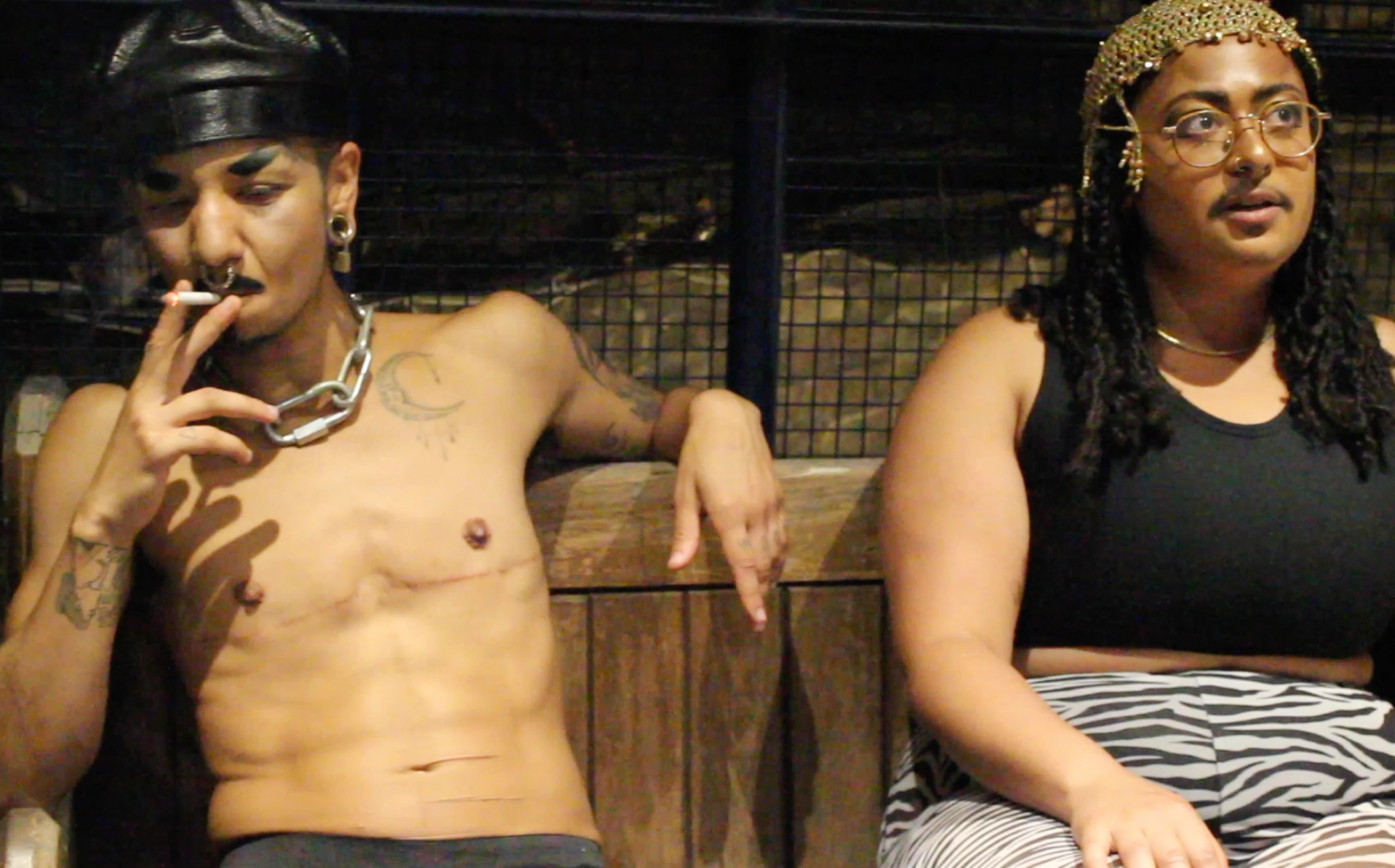“London is open to so many different forms of drag — and they all manage to lift each other up at the same time,” the drag artist Indy Nile says in the documentary London: The Capital of Drag. In the 30 minute-long film, trippy house music plays over scenes of drag queens Tayce, Kitty Scott-Claus and Barbs leaping into splits and falling down stairs; while other acts do comedy sketch TED Talks on mansplaining. Elsewhere, interviews with the talents both on stage and behind it turn this documentary into a colourful and rich tapestry of the city’s drag scene, elements of which are often overlooked in the mainstream.
“My aim was to capture London in this unique time as the end of lockdown was being navigated and the queer scene was managing to survive and thrive, even with restrictions,” 24-year-old filmmaker Ollie Tunmore who shot, produced and edited the doc entirely solo says. Since he finished his degree in media production in 2019, Ollie has been documenting drag shows, queer nightlife and the individuals within it. “I wanted the film to be authentically London. That meant it couldn’t be all cis, gay men running around in wigs. It had to include AFAB queens, drag kings, non-binary people and gender non-conforming acts: those who are underrepresented and often have the most important stories to tell.”
The misrepresentation of London’s drag scene in mainstream television, pride events and event lineups creates unseen barriers within the art form. Up until recently, the Drag Race franchise only platformed cisgender male talents, which means audiences, who only see one part of the increasingly diverse world of drag, ultimately compare performers to the queens they see on TV. “We can’t [simply] throw on a bit of lipstick, foundation and mascara like cis-men can,” says Karla Beauty Marx, a 26-year-old East London AFAB drag artist featured in the documentary. “They get called fabulous for it, while we’re told we’re not doing drag.”
It’s not just on screen that this is happening either; there are deep-rooted biases creating a widening gap in the opportunities afforded to different parts of the drag community. “It affects how we get gigs and it’s rare for us not to be the token AFAB or non-binary person on a lineup.” Karla tells us. “But it also comes down to how we’re socialised. Cis men are told their whole lives that they are allowed to ask for things they want, and we’re told not to be too pushy or demanding. It’s a lot of having to ask for things in a way you’re [socialised to be] uncomfortable with, and that’s something all AFAB drag artists I’ve spoken to agree with.”
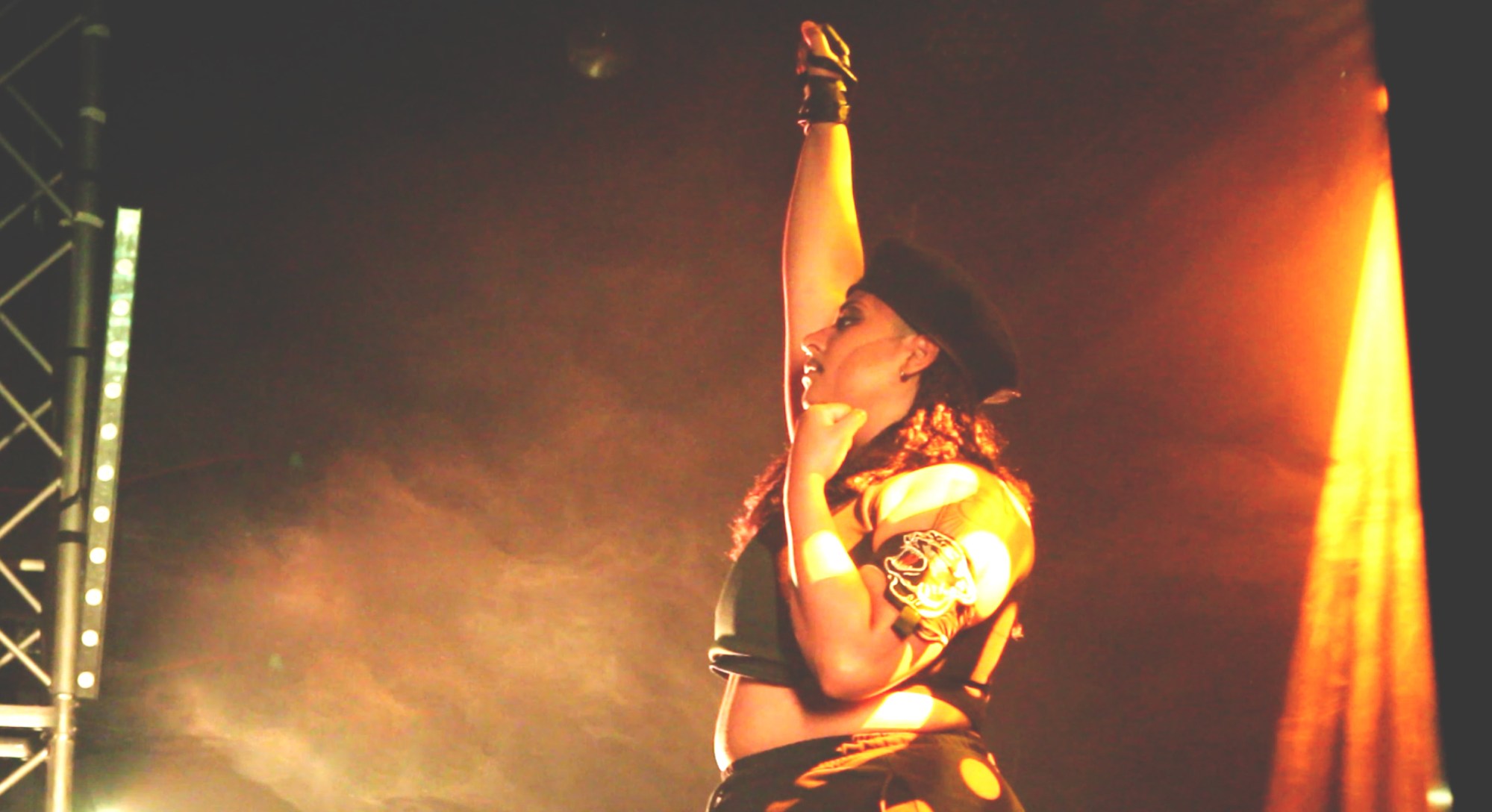
In 2020, global conversations surrounding the need to better represent all communities led to event organisers and producers giving inclusivity and diversity serious thought. But in some cases this didn’t necessarily lead to action. “During lockdown there had been a lot of chat. Everyone was like, ‘we’re going to be really diverse and [platform] lots of different types of drag and people in our lineups when the world opens up again’. But then the world opened up and it was the same. To me, that’s boring… and not what drag is supposed to be about,” says Carrot, a 26-year-old self-defined ‘non-binary drag vegetable from outer space’, in the documentary.
In response to this lack of progress, Carrot — who learnt the art of drag via a course at London’s iconic The Royal Vauxhall Tavern: reportedly where a disguised Princess Di once went for a night out with Freddie Mercury — created The Enby Show. Their monthly variety show pops up at a number of spaces across London as a platform for non-binary performers. Despite four years of hosting drag and cabaret, launching The Enby Show still felt like a risk to Carrot, who didn’t know if audiences would turn up to see London’s ‘creme-de-la-thems’. “I’ve never experienced anything become quite so successful, so quickly though!” The show hasn’t just been a space for non-binary drag talents either, but for the non-binary community as a whole. “It feels like people have been longing for a show that is not only amazing talent and high quality entertainment, but a safe space [for people] to be themselves and not worry if they will be misgendered or in danger.”
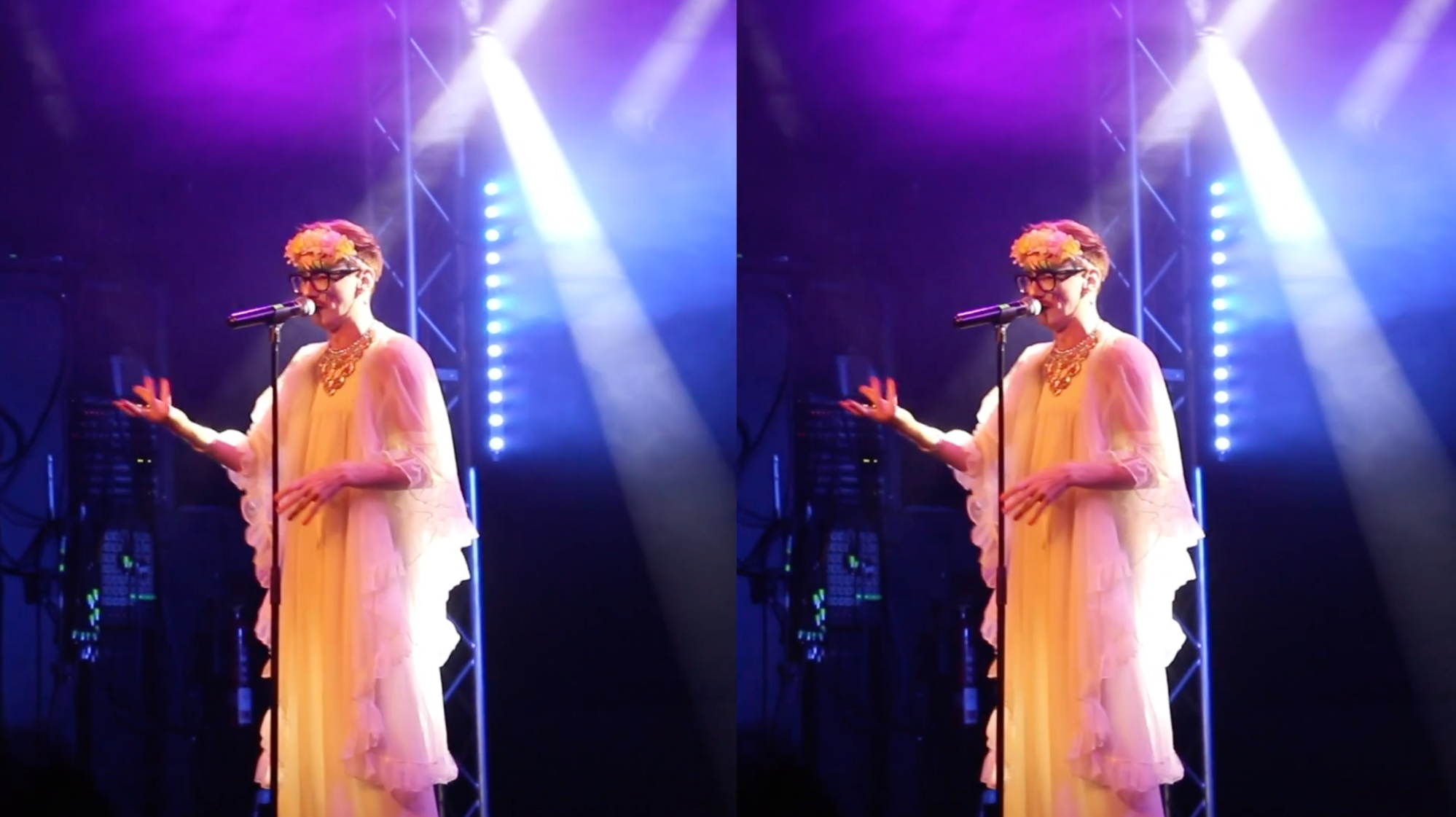
In carving out their own unique scene or, as Carrot puts it, “reclaiming space”, London’s non-binary drag artists are forming their own culture. It’s one that reflects the cabaret and comedy so intrinsic to London’s queer scene, while also being contemporary and using the platform to speak about the issues of the day. “I’d say London’s non-binary drag scene is often more political, satirical and self-reflective than the spaces dominated by cis men.” chimes in Karla. “It doesn’t adhere to the binary in any way so you have kings, things, queens and all other kinds of drag you can think of. They also tend to be more community-oriented than other spaces.”
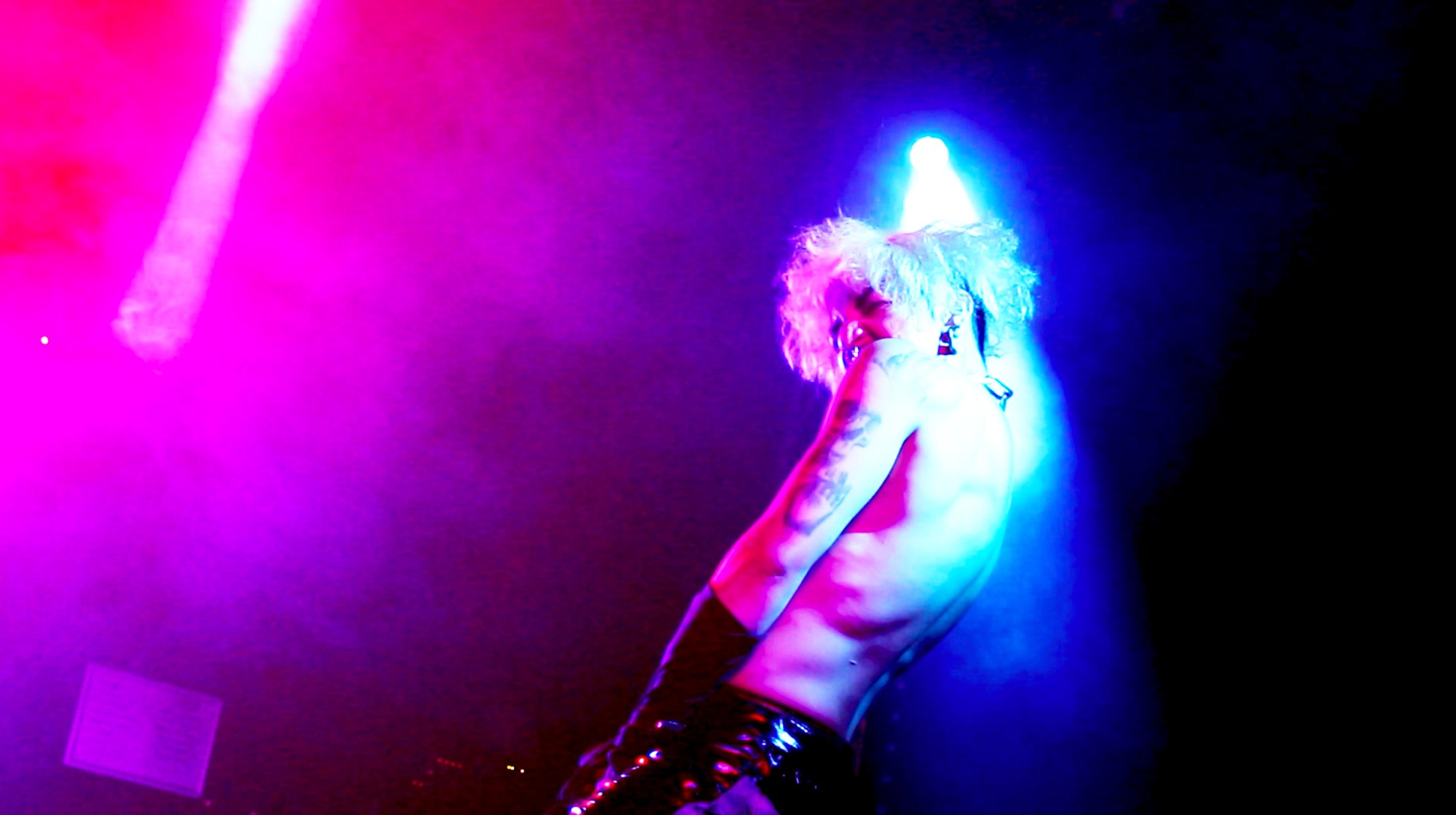
Throughout Ollie’s documentary, those interviewed often reference Drag Race — a sign of just how massive the RuPaul-led competition show is — but their phrasing makes a subtle distinction between the show and the UK’s wider drag culture. While the UK iteration of the global franchise has been lauded for platforming drag from right across the country, it has also been pointed out that it won’t be truly representative until it includes the myriad other forms of drag performed by non-cis gay male acts. This is something slowly changing — with season two’s non-binary runner up Bimini Bon Boulash and season three giving us Drag Race’s first AFAB queen Victoria Scone. Hopefully, it’s a sign that the series will begin to highlight and celebrate other drag icons in equal measure to drag queens.
While there’s still a long way to go, Karla has noticed positive change happening in the lineups of London’s drag scene more generally too: “Some cis male producers are working hard to make sure non-cis male drag artists are valued and celebrated. And non-cis male performers and producers are supporting each other, which is great. While the loss of major diverse events, like the beloved Her, Upstairs a couple of years ago, hit the community hard; Karla highlights Bar Wotever at the Royal Vauxhall Tavern, East London pub The Glory, queer collective Cookie Jar and Dalston Superstore’s CAVITY as “fabulous spots for non-binary talent”.
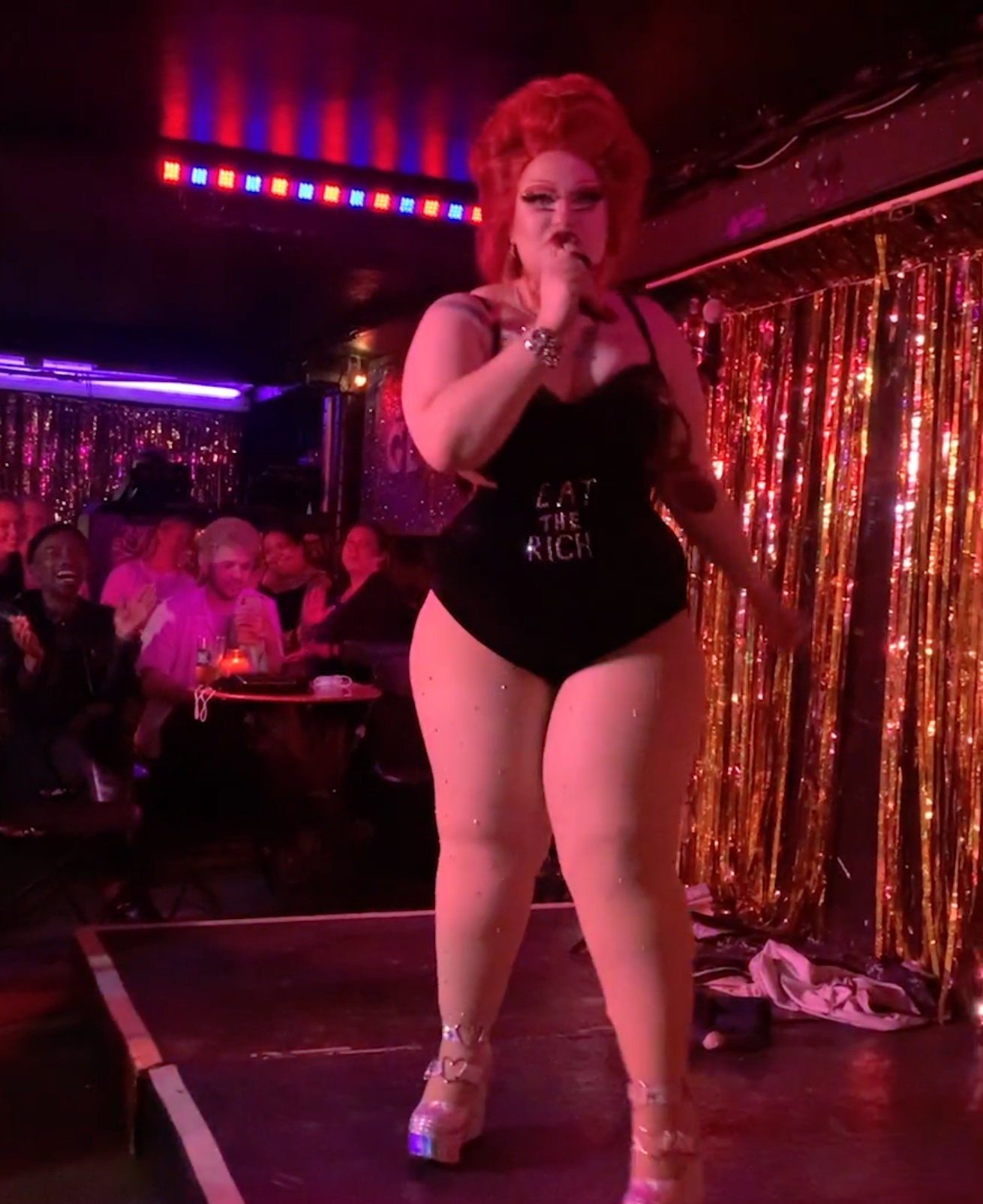
There’s no denying the allure of the capital’s drag scene, which draws acts and audiences near and far to its doors. “London is traditionally a place where queers from all across the UK gather, which creates such a vibrant, gender diverse scene,” says Worcester-native Ginny Lemon of Drag Race UK season two fame. In the documentary, Ginny performs at The Enby Show, looking directly into the camera before chaotically swinging yellow foam fingers through the air, Miley Cyrus-style. “I love to come down to the big smoke to dip my trotters into the non-binary performance scene.”
A sense of campy cabaret, piss-taking slapstick humour and unique contemporary cultural references (think Pasty’s Greggs’ Sausage Roll reveal and Bailey J. Mills’ iconic busty Velma drag) is what makes the London scene so magical right now. As the non-binary drag community continue to claim their space within the city, The Capital of Drag acts as a calling card for the importance of their inclusion. Put these performers on stage, and the whole LGBTQ+ community grows richer as a result.
Follow i-D on Instagram and TikTok for more on drag culture.
